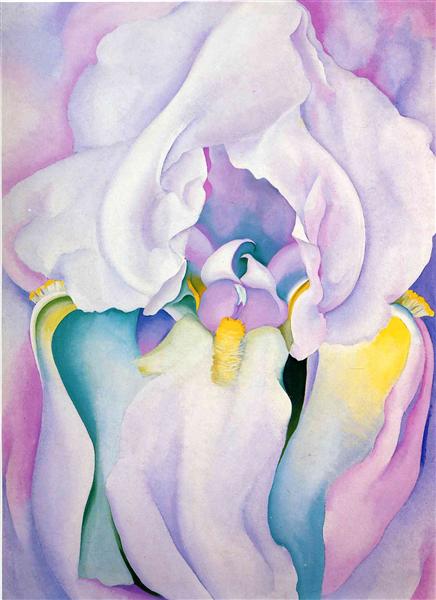Georgia O’Keeffe, White Iris

Throughout her long career, Georgia O’Keeffe (1887-1986) painted many subjects, from flowers to city buildings to the skulls of animals baked white by the sun of the desert Southwest. In each case, she captured the essence of her subject by simplifying their forms. In 1924, the year O’Keeffe married Alfred Stieglitz, she began to paint enlarged flower pictures such as White Iris.
In these paintings, she magnified and abstracted the details of her botanical subjects, so that often a large canvas was filled with nothing but a fragment of the intersection of petals. These flowers have a yearning, reaching, organic quality, and her botany seems to function as a metaphor for zoology. That is, her plants are animistic, they seem to grow because of will, not merely because of the blind interactions of the unfolding of the genetic code with water, sun, and minerals.
And although O’Keeffe denied any attempt to portray sexual imagery in these flowers (those who saw it, she said, were speaking about themselves and not her), the edges of the petals, in their folds and convolutions, are frequently reminiscent of parts of the female body. This characteristic may be one of the reasons that O’Keeffe was “invited to Judy Chicago’s Dinner Party. (you will encounter this work in a future module)[1]
- Lawrence S. Cunningham, John J. Reich, Lois Fichner-Rathus, Culture and Values: A Survey of the Humanities, vol. II (Boston: Cengage Learning, 2014), 791. ↵

